 |
| "A genuine bargain for such great sound + 11-channels" |
Brevis...
Price: $2,995 retail
Likes: 11 channels, fantastic fidelity
Dislikes: zilch, nada, zero complaints
by John Gatski
From pro audio to motorcycles and ATV's — as well as home audio video — the name Yamaha always means a high-caliber product — no matter what the niche. After hearing about the new AVENTAGE MX-A5000 11-channel home theater amp in 2013, I expected it to be top-notch multichannel amp. Almost every Yamaha pro audio/consumer audio product I have ever tested has been aces. And that is exactly what I found during my test run with the MX-A5000— a dynamic, yet smooth, multichannel power house that is quite a bargain when considering how much you get for your $2,995.
Features
The made-in-Asia MX-A5000 is a high-end multichannel amp that can continuously crank out more than 100 watts per channel in 5 or 7 channel modes, and I estimate as high as 80 continuous watts, across all 11 channels, if so desired. Yamaha’s two-channel rating is 170 wpc at .9% distortion. At 150 wpc across two channels, the amp distortion falls to .06%. The listed signal-to-noise is 116 dB (@ less than 60 µV residual noise).
The made-in-Asia MX-A5000 is a high-end multichannel amp that can continuously crank out more than 100 watts per channel in 5 or 7 channel modes, and I estimate as high as 80 continuous watts, across all 11 channels, if so desired. Yamaha’s two-channel rating is 170 wpc at .9% distortion. At 150 wpc across two channels, the amp distortion falls to .06%. The listed signal-to-noise is 116 dB (@ less than 60 µV residual noise).
The amp features 11 balanced XLR and 11 RCA inputs for flexible setups, such as Dolby Atmos speaker scenarios — as well as powering a home-theater setup and a couple of other room/zone speakers. The sheer number of speaker outputs also makes this amp a great choice for bi-amping speakers.
In the context of high-end multichannel amps, I rank the Yamaha up near the top — especially with its price tag at under $3,000. There are some expensive multichannel separates that may eek out a bit more space in their presentation and higher-power levels. But even against those amps the MX-A5000 is an impressive amplifier, considering the price, for serious home theater/serious music listeners who have their systems in medium to large rooms.
The key to the MX-A5000’s sonic signature is its current-feedback, three-stage Darlington bipolar output circuit, a massive power supply and 27,000μF custom block capacitors. This amp can deliver and hold current for deep bass and intense dynamic bursts of main channel audio and surround effects, as well as high-res multichannel music playback from Blu-rays or music-download sources, such as 2L.
Yamaha likes to tout not only the electrical design, but also the amp’s physical construction. The amp includes a rigid housing for the internal parts and the chassis stiffness is enhanced by an H-shaped cross frame that boosts mechanical strength of the support structure. To further enhance resistance to airborne and room-to-rack vibrations, an installation A.R.T. (Anti-Resonance Technology) Wedge was installed in the center of the bottom cover, and a double bottom, consisting of vibration control plates made of 1.6 mm black steel. In order to support the heavy heat sinks and other electronic parts, the amp features a left-right independent construction strengthened by a rigid-frame structure. And the bottom frame further reduces the transmission of vibration produced by the large power supply transformer and heat sinks.
 |
| One brute of a power supply; check out those caps |
The MX-A5000 is designed as a high-end AVENTAGE line companion to the CX-A5000 multichannel preamp/processor, which was out of stock when we received our amp review sample. But the amp can work with any preamp/processor, or the pre outputs of a multichannel receiver.
Being an amplifier, the MX-A5000 is a much more simple device to set up than the preamp in front of it. The front panel of the attractive power amp houses its power switch and Channel A/B speaker selector. Around back are the pairs of line inputs, via RCA unbalanced or XLR balanced, and the three-way speaker terminals which are arranged on each side of the amp.
A 12V trigger also comes standard for those installers and do-it-yourselfers who take the sequential power-up route. There also is an auto-off switch that engages a self shut-off after eight hours, and there is a balanced/unbalanced selector for each channel.
With so many speaker connectors and input connectors, the wiring looks a bit daunting at first, but once you settle on your particular configuration and have the cables in hand, attaching the conduits is a piece of cake. For my setup, I configured the MX-A5000 amp as a five channel amp for my main home cinema room. Left, right, center and two surrounds, using an AudioControl Maestro 3 multichannel preamp as the primary signal source and running balanced cables to the amp inputs.
The Yamaha kicks butt with the Bruce Willis Live Free and Die Hard soundtrack; the opening shootout's spent shell casing effects rained down on me like a sonic cloudburst, and the intense explosions pushed up the SPL meter with no trace of sonic sludge. Clean, dynamic and open! That is what you want from AV amplification.
With the sheer numbers of inputs and bi-amping capability, you can set up numerous speaker scenarios including running the home theater in 5.1, 7.1, 9.1 or up to the 11 full channels if so desired. You can also set up multichannel configurations as well as two room zones. With all its channels, it is also possible to bi-amp up to five pairs of speakers. Bi-amping can enhance clean signal amplification by allowing each driver to have its own amp connection.
The set up
I installed the MX-A5000 in my home theater room. It was mated with my reference professional Westlake LC8.1 L-R speakers, Westlake LC2.65 center and NHT One surround speaker system. Bass duties were handled by my reference Paradigm Reference Studio Sub 15 subwoofer. I fed the amp line signals from either the AudioControl Maestro 3 or the AudioControl AVR-4 receiver’s preamp section. I also put in the bang-for-the buck Outlaw 975 pre/pro — a steal at $500!
Just for comparison, I also enabled a BD player direct-to-amp playback system by routing five analog RCA outputs from my Oppo BDP-105 straight into the amp’s unbalanced inputs, playing lots of movies and hi-res surround music directly from the BD player
On hand for amp comparison, I had a first generation five-channel AudioControl Pantages 80 wpc Class H amp, and two 1990s-era Carver home theater separates (a three- and a two-channel amp). Because the AudioControl AVR-4 receiver is as good as most separates, I also used it for comparison, as well as using its preamp section to link to the Yamaha.
 |
| The MX-A5000 has generous connection space |
Setting up an amp usually takes less time than setting up a pre/pro; you just need to connect the inputs and all the speaker cables. The amp weighs about 56 pounds, which is quite manageable compared to the high-end Pass amps I reviewed a few months ago (more than 300 pounds split among two separate chassis). Yamaha maximizes the rear-panel space pretty well with left speaker outputs on one side and right on the other. The inputs are mounted in the central portion of the back panel.
I find it interesting that more and more amps, including the Yamaha, no longer have grounded AC receptacles and cables, opting for the two-pronged power cables. Nonetheless, an Essential Sound Products Essence II Reference power cord was connected to the amp during the review.
For line level connection, I chose Wireworld’s superb, accurate-is-neutral, Eclipse7 balanced analog cables for preamp-to-amp connection, and Wireworld’s RCA cables for the direct Oppo BDP-105-as-preamp setup; Wireworld speaker cables also connected the speakers to the amplifier.
To test the MX-A5000 as an audiophile caliber amp, I added a Resonessence Mirus high-end DAC for two channel playback up to 24/384, which I actually had one demo track at that high of a sample rate. I played hi-res music from a Dell Venue 8 as the source player (via USB Audio Player Pro) for the hi-res music, linked to the DAC and the DAC fed directly into two of the balanced inputs of the MX-A5000.
I matched the speaker levels precisely using a professional AudioControl real-time analyzer/SPL meter, lab-grade mic, and the AudiControl Maestro pre/pro’s onboard test signal generator. I find that the cheap handheld meters don’t do a good job in accurately measuring the SPL level of low bass. Thus, the pro analyzer/SPL unit allows me to precisely match the speaker levels, which makes a big difference in clean multichannel performance.
The Audition
First up, I played the animated movie BD of Meet The Robinsons. It has a linear PCM 24-bit/48 kHz 5.1 soundtrack and among the most open and dynamic BDs that I own. It has lots of steered surround effects, and open, boisterous music soundtracks that lesser amps and receiver amp sections strain to reproduce cleanly when you crank up volume.
My reference AudioControl AVR-4 and a few other high-end receivers, as well as high-end Krell, Marantz and Classe amps can do this soundtrack justice at loud levels. The late 1990s Carvers I used for comparison are pretty good up to say around 87 dB continuous level, but when you push them to the lower-to-mid 90 db+ peaks, they start to sound strained.
Strain is not a word you can associate with the Yamaha's sonic description. The MTR BD soundtrack’s sonic signature, like the AudioControl receiver’s, was big and imposing with great width and space spread among the tracks’ varying elements. Right off the bat, I could tell that the MX-A5000 had the capability to relay the massive dynamics of the linear PCM soundtrack.
Strain is not a word you can associate with the Yamaha. The BD soundtrack’s sonic signature, like the AudioControl receiver’s, was big and imposing with a great width and space spread among the tracks’ varying elements. Right off the bat, I could tell that the MX-A5000 has the capability to relay the massive dynamics of the linear PCM soundtrack.
Pushing into the mid-90 dB region, not a hint of harshness or stridency in the midrange or low treble. And its ability to handle the non-subwoofer bass was just as impressive — quick, taut and deep.
Next up was the Live Free and Die Hard Blu-ray, the Bruce Willis action movie from 2007. The early action sequences have intense bursts of gun fire explosion, car chases, and a lot of added effects in the rear channels. Like the Meet The Robinsons, the soundtrack is quite dynamic, and its maximum peaks can punish you with sub-standard amplification. Cheap receivers and amps can’t cut it with this disc.
The Yamaha kicks butt with the Bruce Willis flick soundtrack; the shell casing effects in the beginning shootout rained down on me like a sonic cloudburst, and the intense explosions pushed up the SPL meter with no trace of sonic sludge. Clean, dynamic and open! That is what you want from AV amplification.
The AudioControl receiver and the Yamaha amp are similar in their presentations and smooth factor up to about 95 percent. The AudioControl is still slightly more audiophile in its sense of space and finesse with music soundtracks, but the Yamaha amp’s sheer extra horsepower may eek out a slight dB advantage in a really large room. Still you are comparing a receiver (though an expensive one) to a separate amp only unit; a high-end, separate, high-power amp ought to deliver high sound level with no problem.
 |
| Yamaha does not skimp on quality parts selection |
I switched to surround music listening with several AIX Record Blu-ray music discs played directly from the Oppo to the Yamaha, using the Oppo's digital volume control. Again, the Yamaha excelled at the nuances, the timbre of classical piano, and the well-recorded multichannel soundtrack enveloped me in its reassuring smoothness. Not tube amp smooth, but a natural, analog music instrument smoothness.
I fired up the Dell Tablet and the Resonessence Mirus DAC, input directly into Yamaha amp and I played several hours of stereo, hi-res download music from HD Tracks. From the 24/96 reissue of Led Zeppelin III, I was impressed with the remaster’s expanded space of the guitar tracks and fullness of Robert Plant’s vocals. The Yamaha amplified the classic blues-folk rock cut, Gallows Pole in fine form — with Plant’s high-pitched velocity vocal. Jimmy Page’s acoustic guitar and banjo and John Bonham’s heavy drum sound is much better heard in this reissue. Listening to the cut through the MX-A5000 adds to the hi-res sonic experience. This is a very good hi-fi amp.
To test the dynamics of acoustic guitar and ultra high-resolution recording and playback, I turned to my own 24-bit/384 acoustic guitar test cut that I made with a pair of high-end mics, and an Antelope Eclipse 24/384 A/D-to-computer recording setup. Recording myself on a Taylor 810 guitar in stereo, the two-minute, 30 second cut personifies the extra nuance and textured sonic space of high-res recording. Though not as expansive sounding through the Yamaha as it was through the $60,000 Pass Labs XS150 mono blocks tested earlier this year, my guitar snippet was not let down by the Yamaha amp. It still sounded fresh and extended — and it only costs $2,995!
I also liked the sound of my Beatles 24-bit reissues played through the Yamaha. The stereo versions of the early albums are remarkably well recorded, and the hi-res transfers bring out that simple, yet full fidelity sound. Just listen to that snare from Ringo’s perfectly rendered "Act Naturally."
I also liked the sound of my Beatles 24-bit reissues played through the Yamaha. The stereo versions of the early albums are remarkably well recorded, and the hi-res transfers bring out that simple, yet full-fidelity sound. Just listen to that snare from Ringo’s perfectly rendered drumming on "Act Naturally."
All in all, the Yamaha MX-A5000 excels not only at playing your movie soundtracks, but also is a pretty darn good music amp. If you want it all in one amp, this is one to consider. I did not have any complaints with the Yamaha MX-A5000. Easy to setup, plenty of space for the speaker cables to co-exist with the input cables, and it has a 12V trigger for remote turn on. At 56 pounds, it is not light, but not a boat anchor either.
The verdict
In the context of high-end multichannel amps, I rank the Yamaha up near the top — especially with its price tag at under $3,000. There are some expensive multichannel separates (Classe, Krell Mark Levinson) that may eek out a bit more space in their presentation and higher-power levels, but the MX-A5000 is an impressive amplifier for serious home theater/serious music listeners who have their systems in medium-to-large rooms. I expected nothing less from Yamaha, and they delivered An Everything Audio Network Stellar Sound Award for sure.
John Gatski has been evaluating consumer, audiophile, home cinema and professional audio gear since 1992. In 1995, he created Pro Audio Review, and he has written for Audio, Laserviews, Enjoy The Music,The Audiophile Voice and High Performance Review. Everything Audio Network is based in Kensington, MD. Articles on this site are the copyright of the ©Everything Audio Network. Any unauthorized use, via print or Internet, without written permission is prohibited. He can be reached via everything.audio@verizon.net
John Gatski has been evaluating consumer, audiophile, home cinema and professional audio gear since 1992. In 1995, he created Pro Audio Review, and he has written for Audio, Laserviews, Enjoy The Music,The Audiophile Voice and High Performance Review. Everything Audio Network is based in Kensington, MD. Articles on this site are the copyright of the ©Everything Audio Network. Any unauthorized use, via print or Internet, without written permission is prohibited. He can be reached via everything.audio@verizon.net




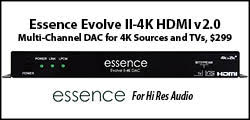

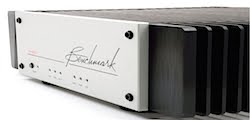


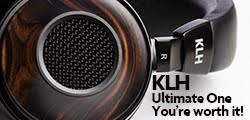
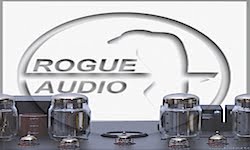

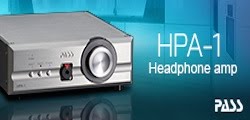


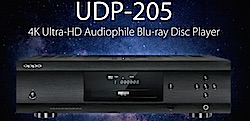
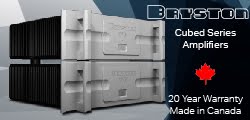

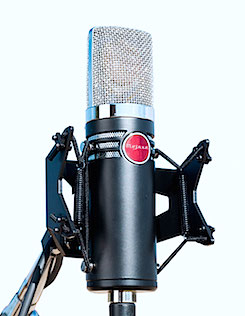
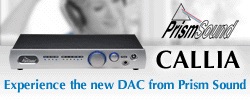
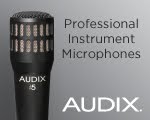









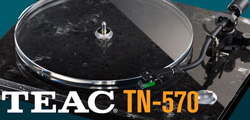





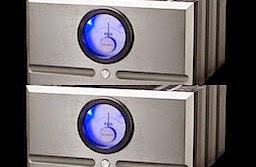



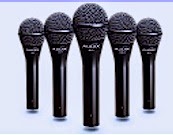


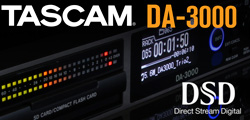

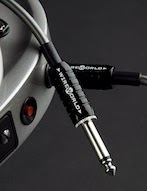

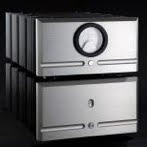









No comments:
Post a Comment